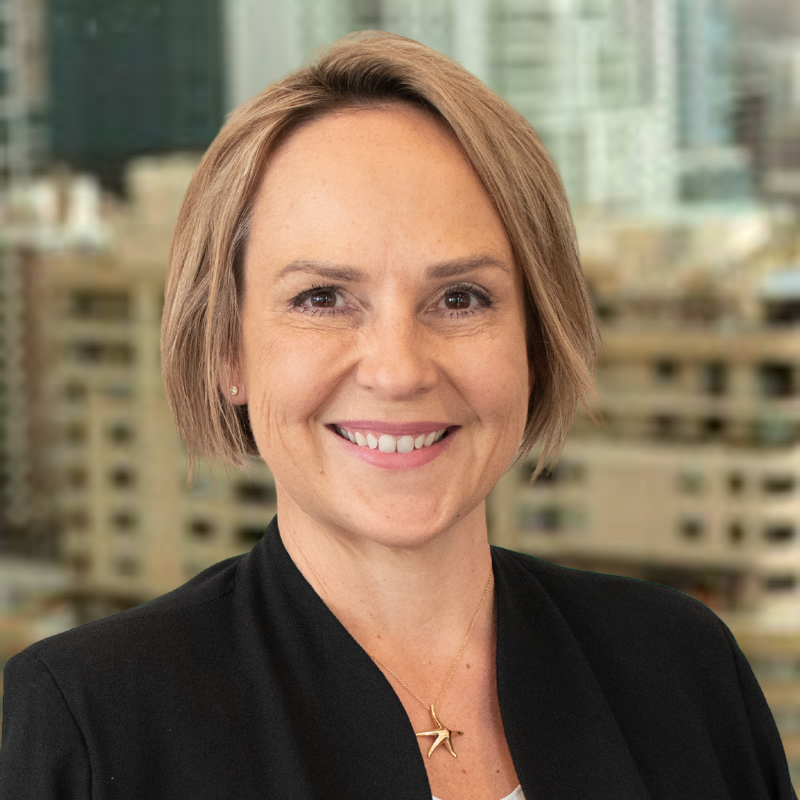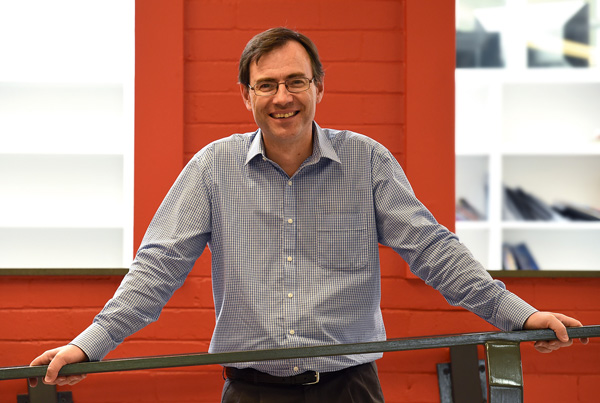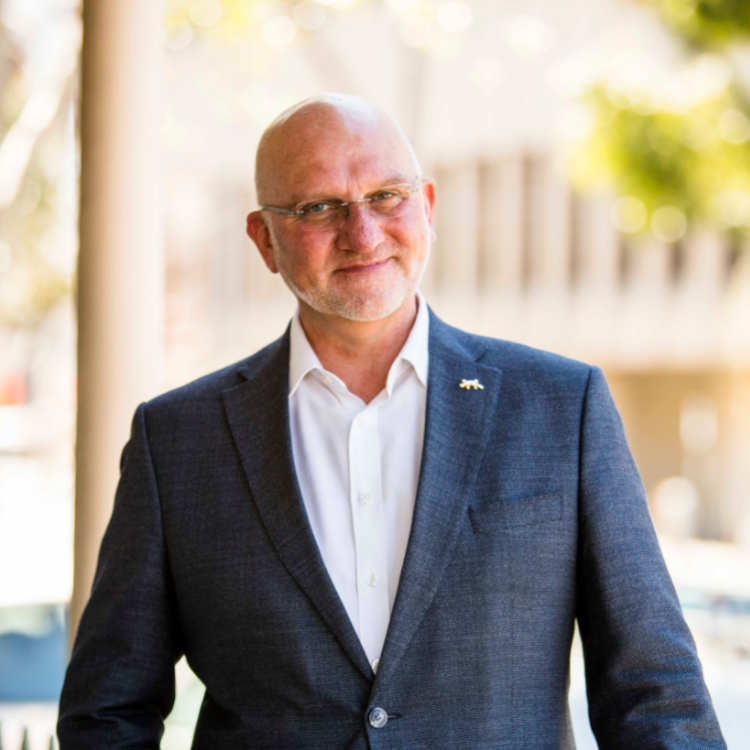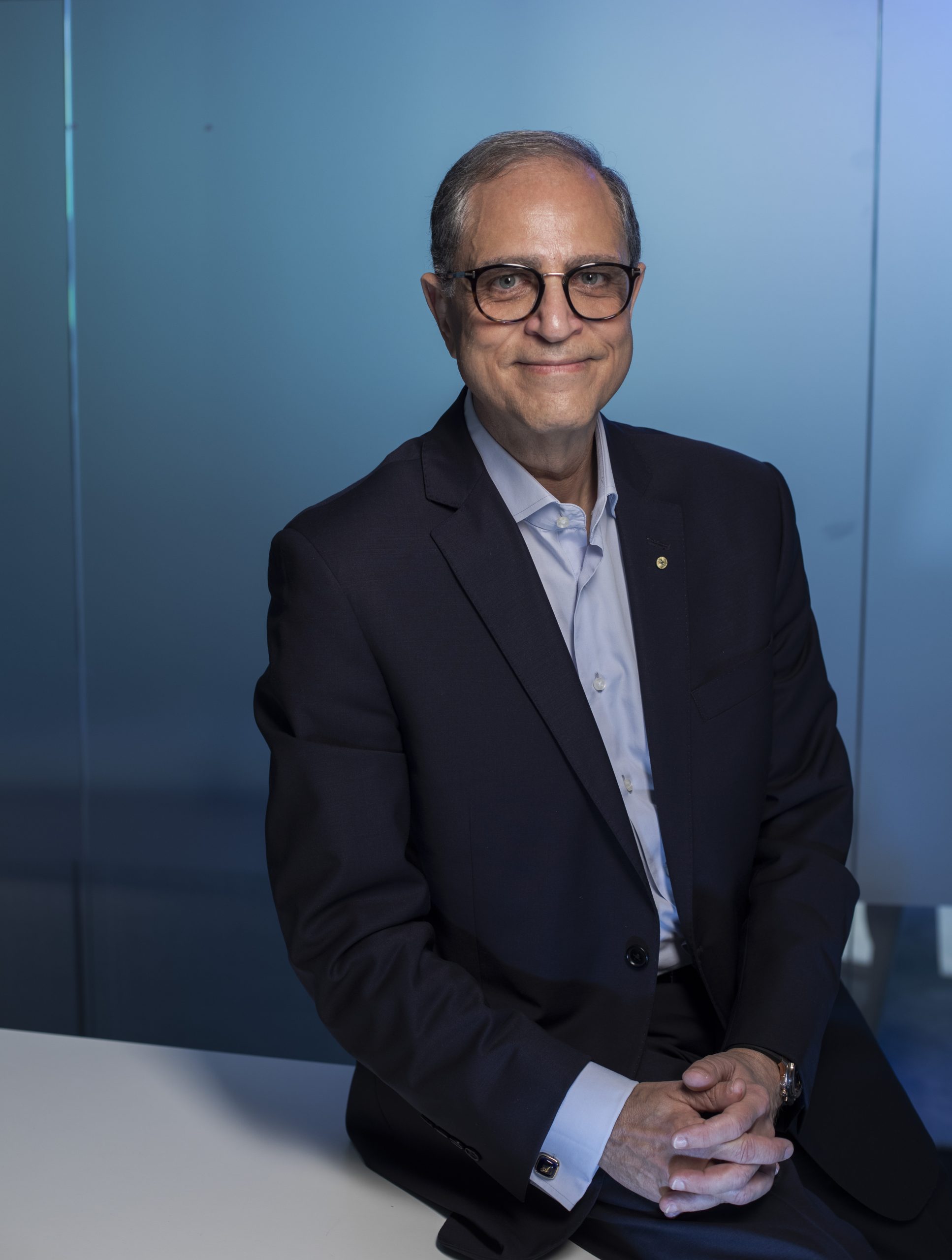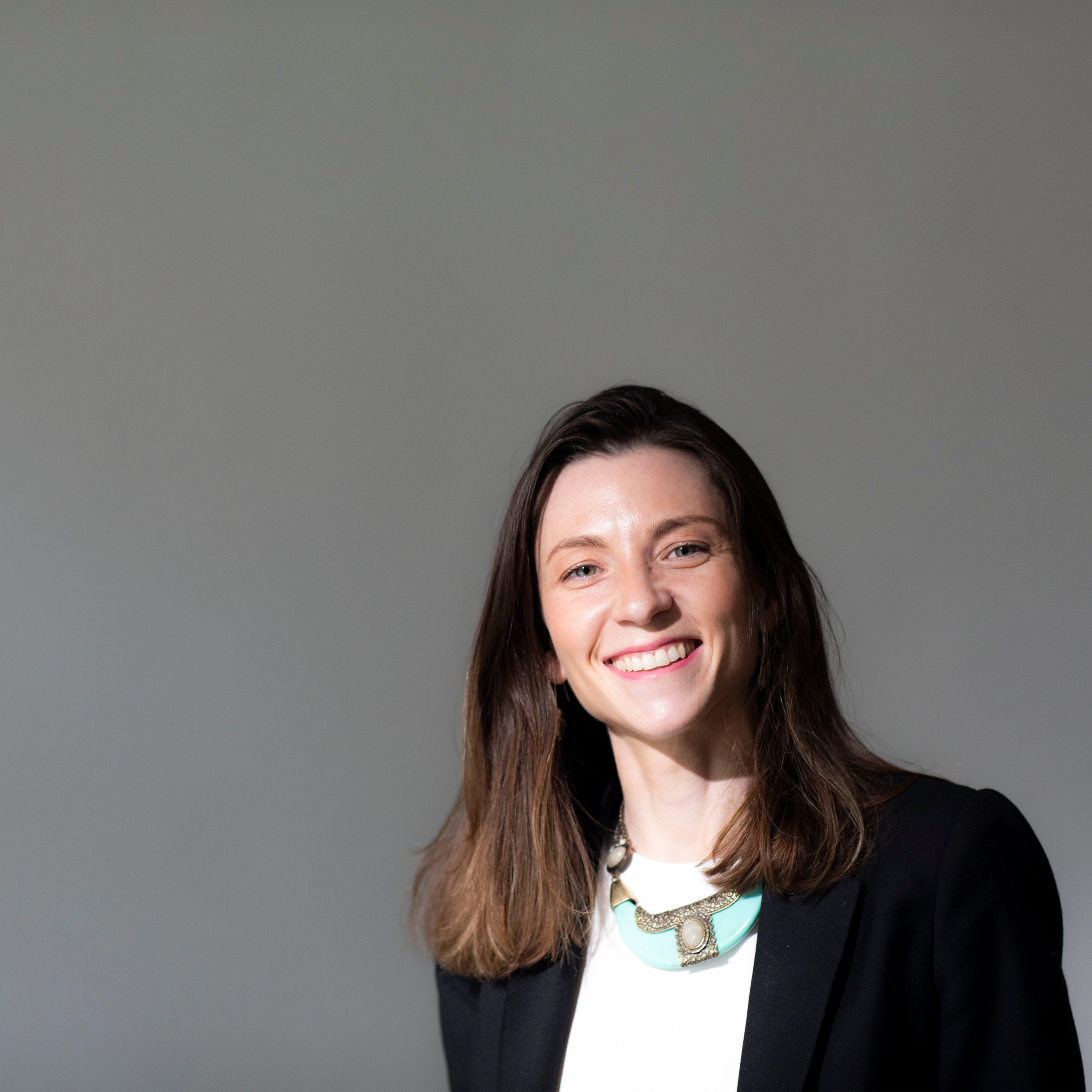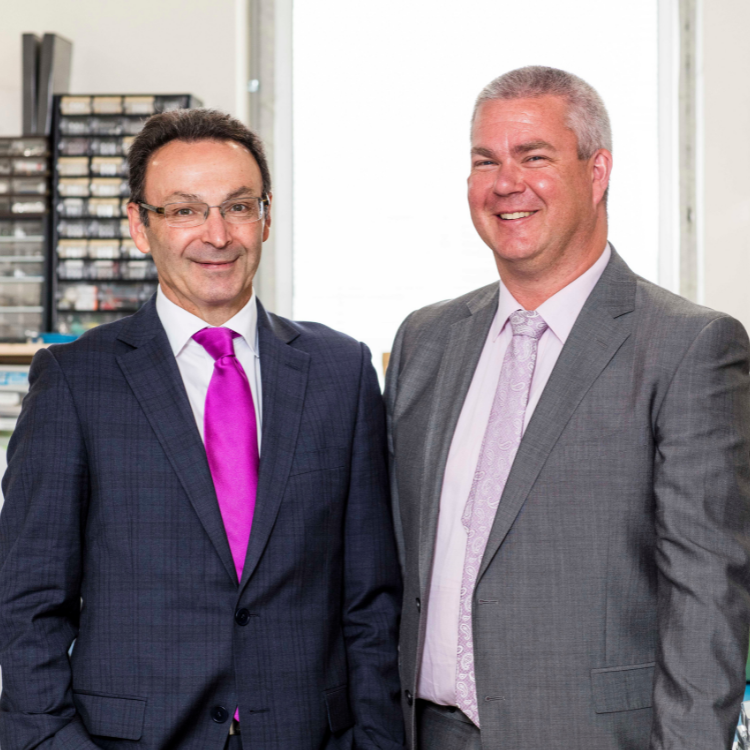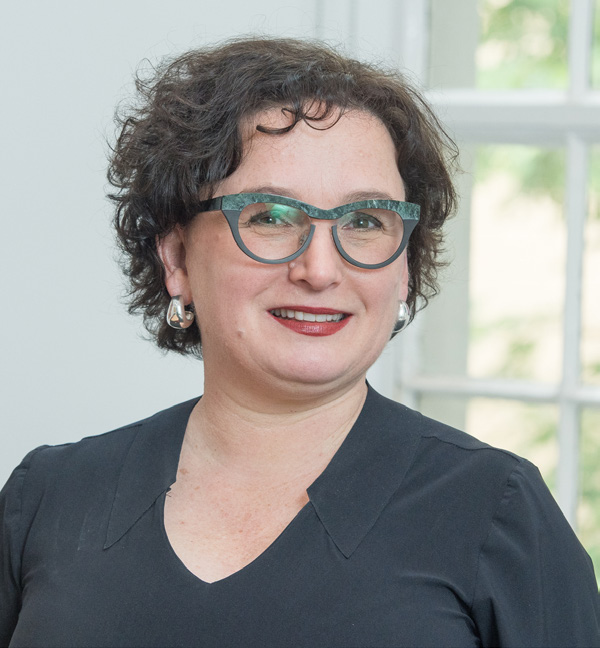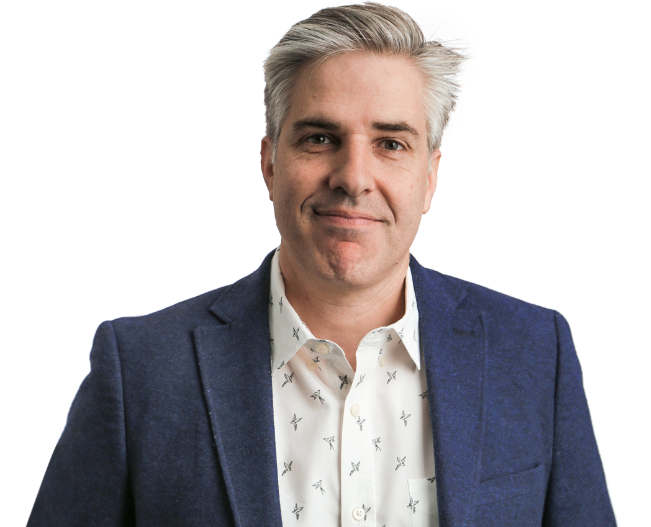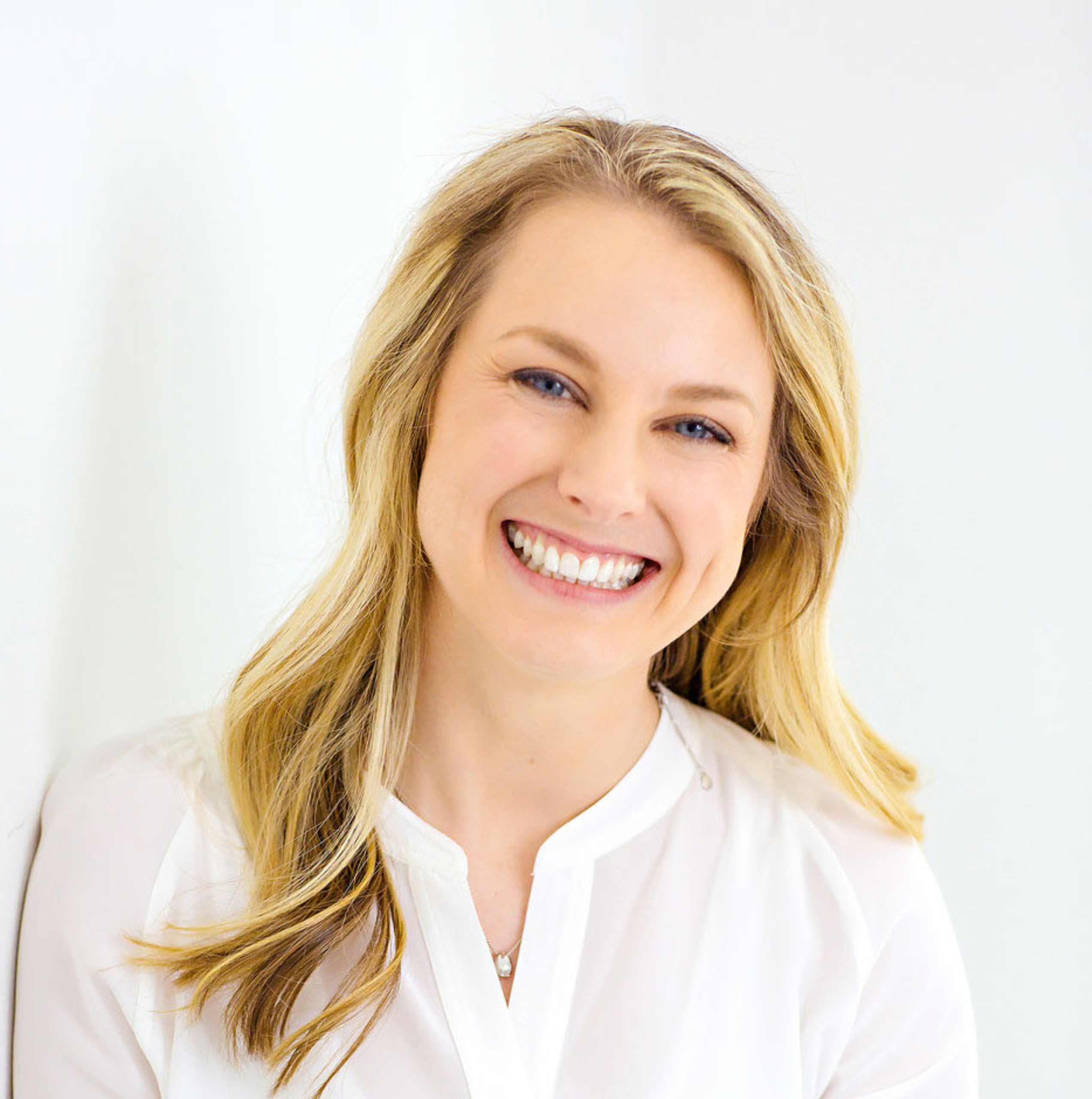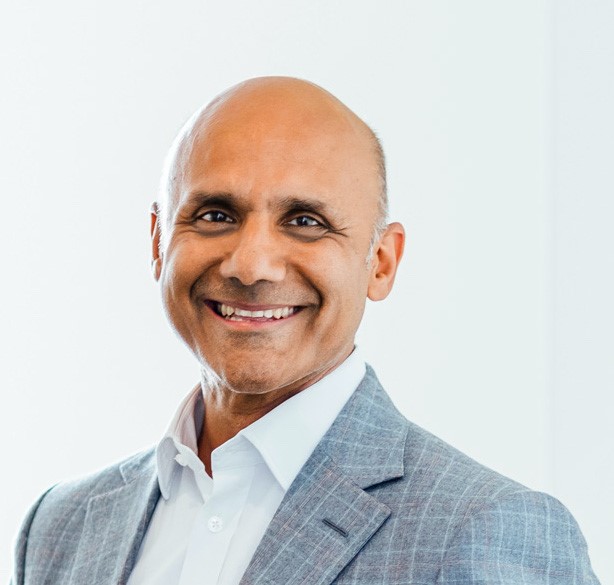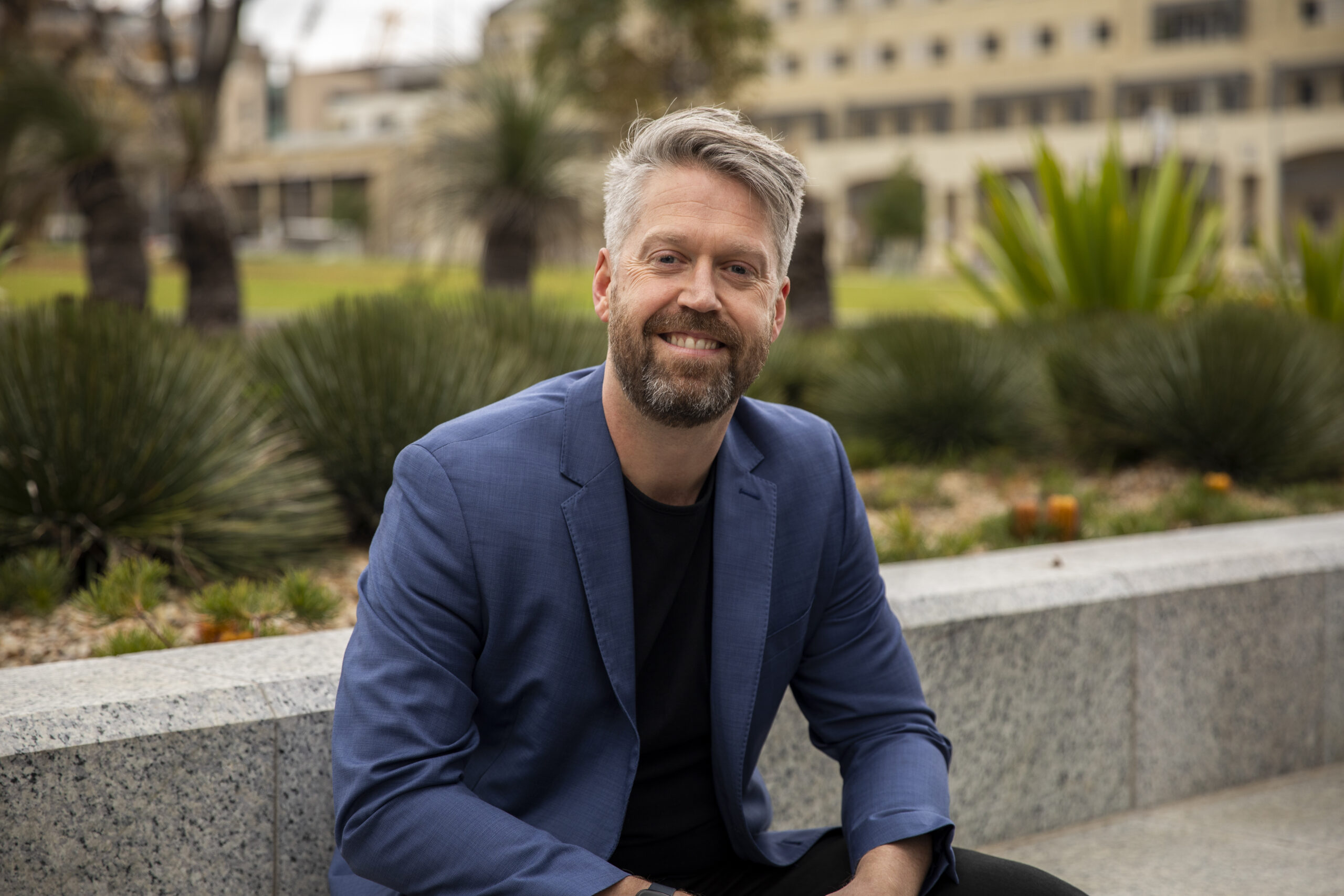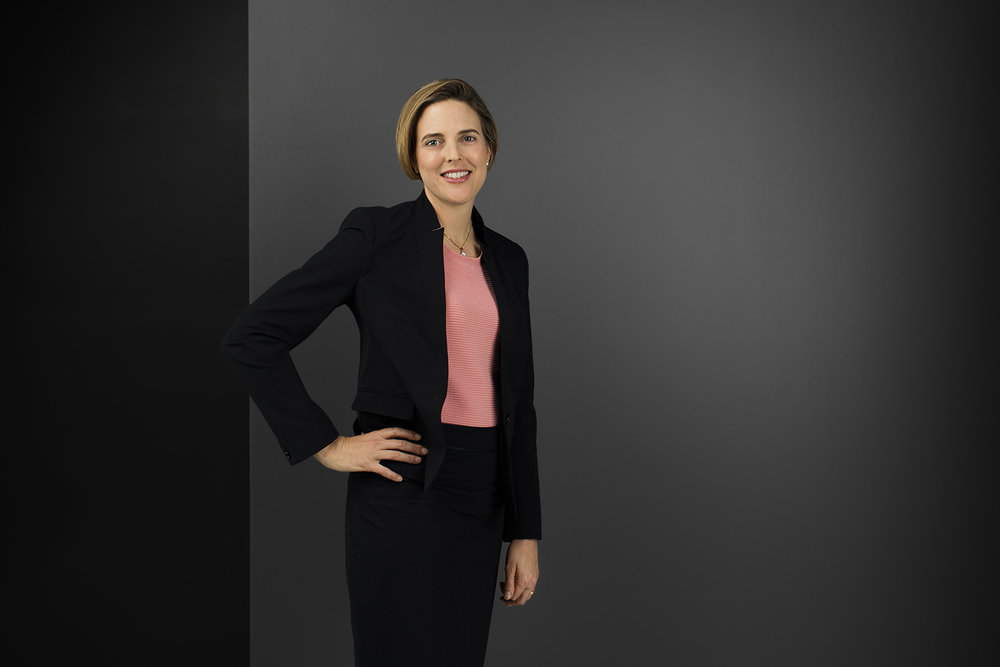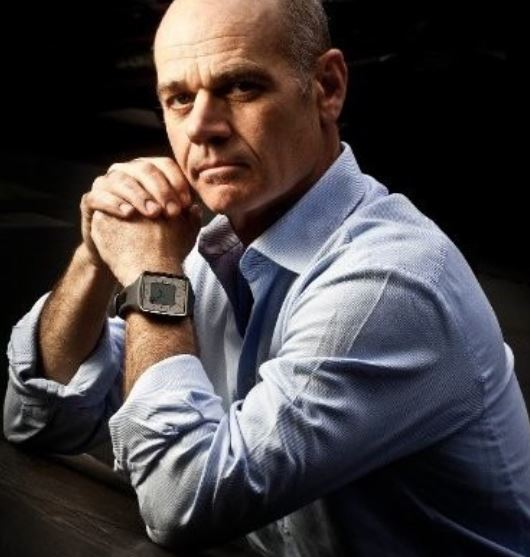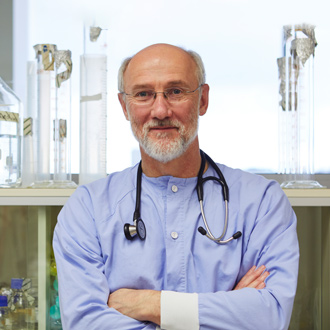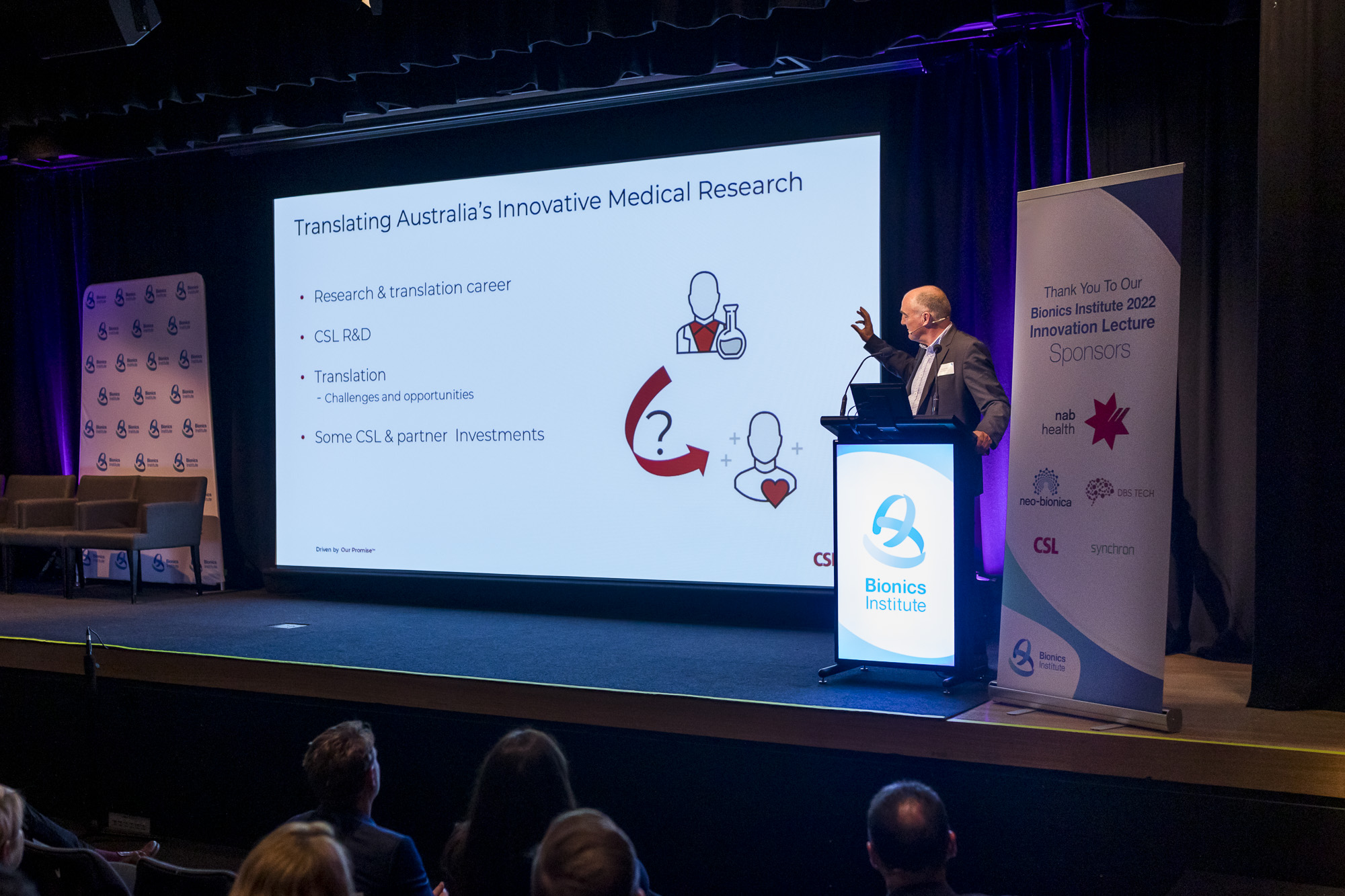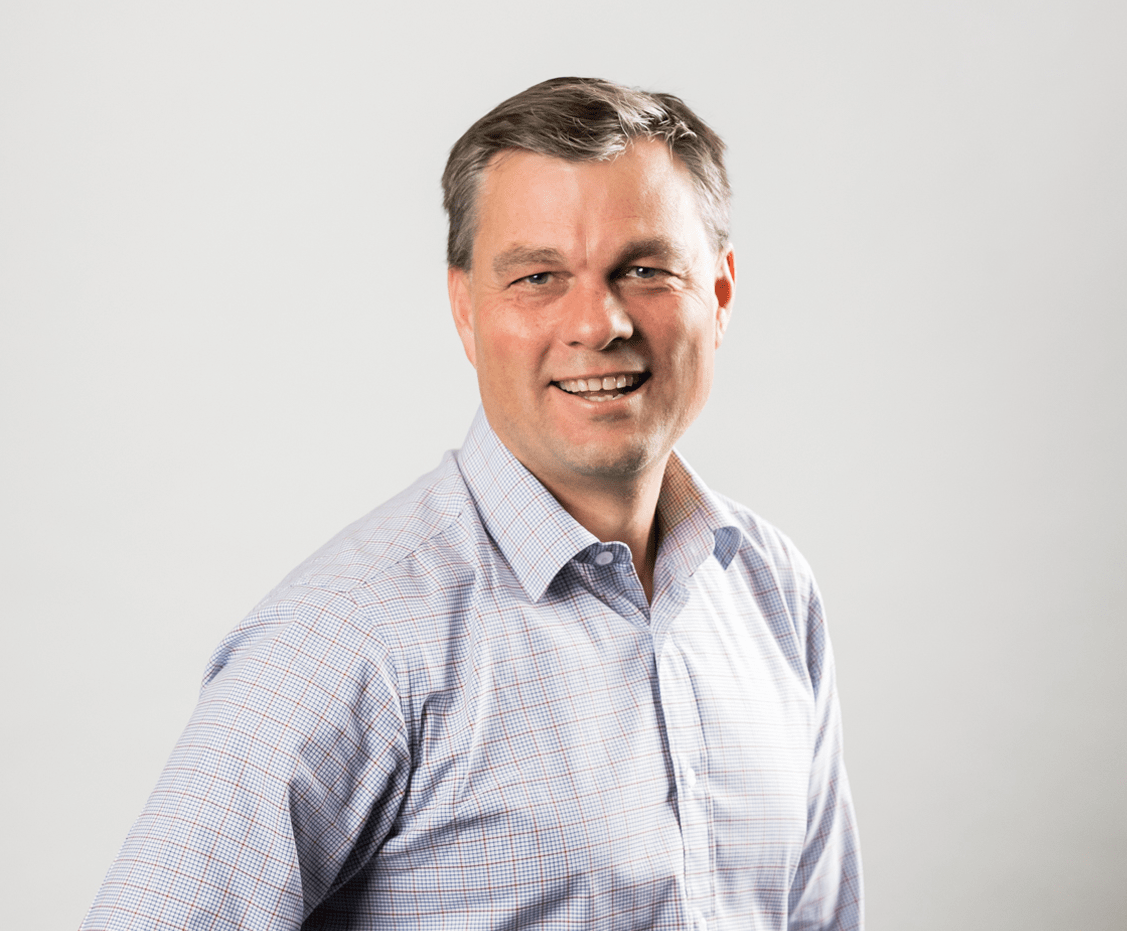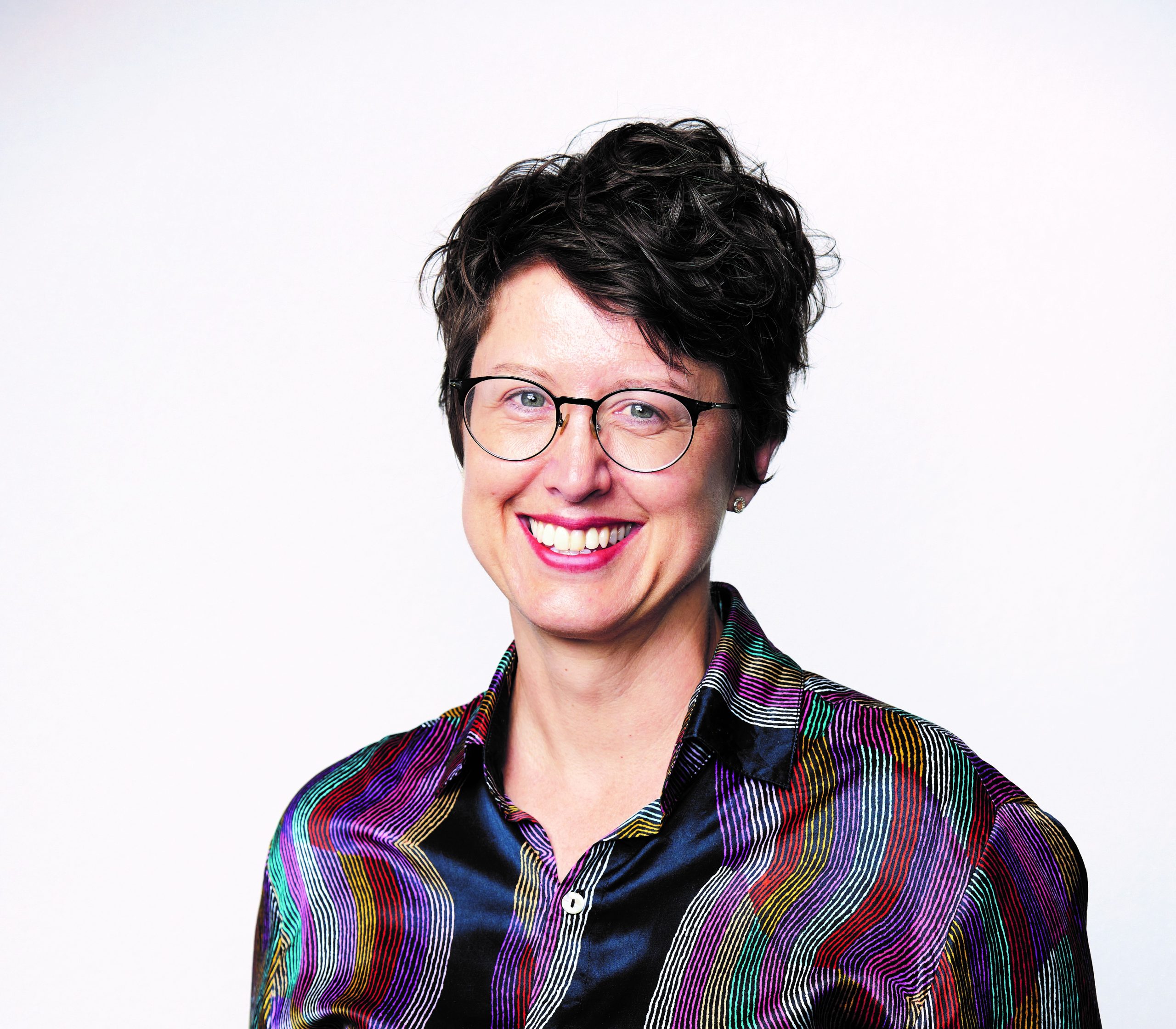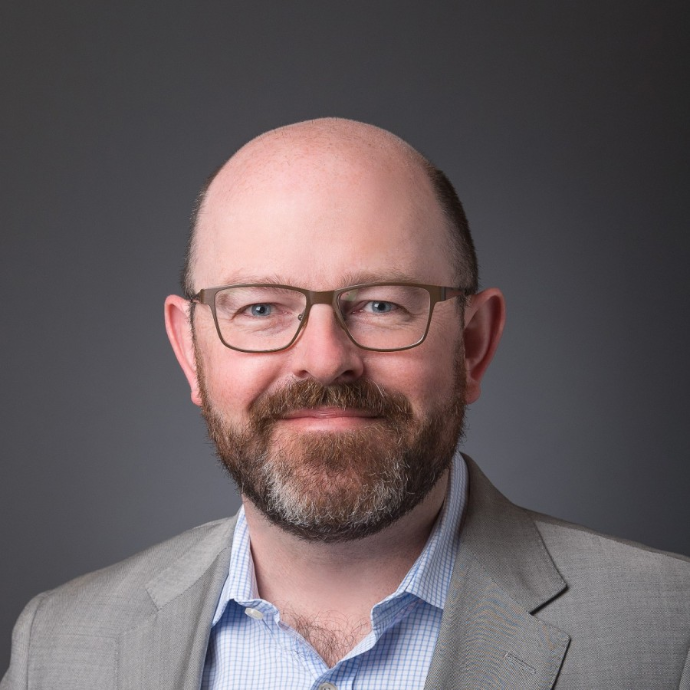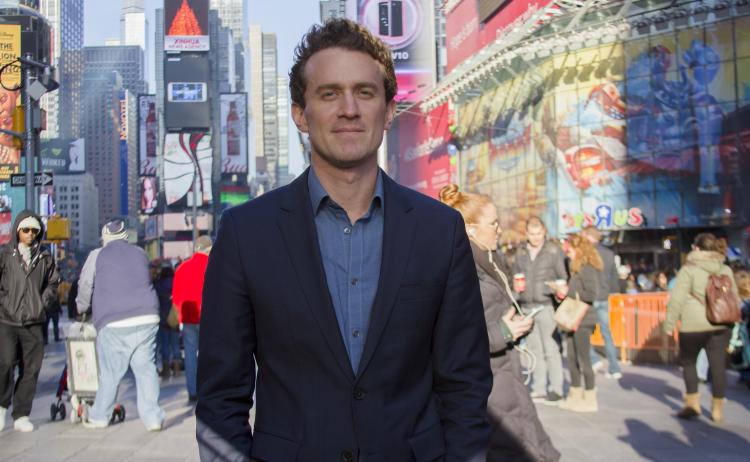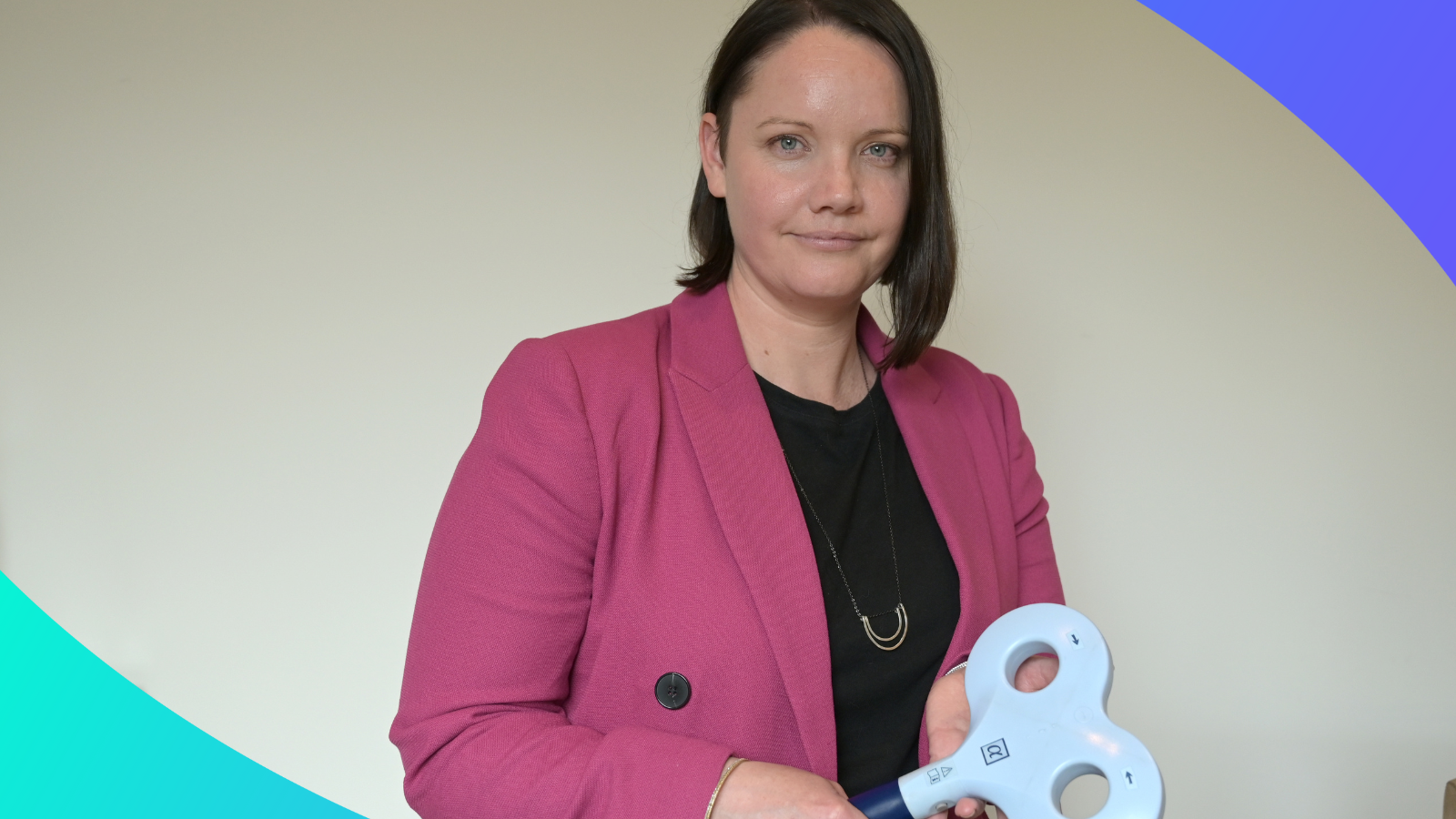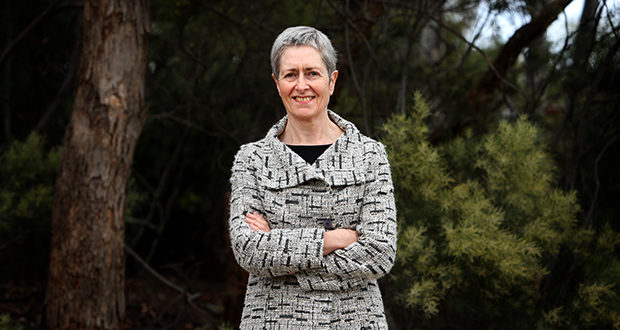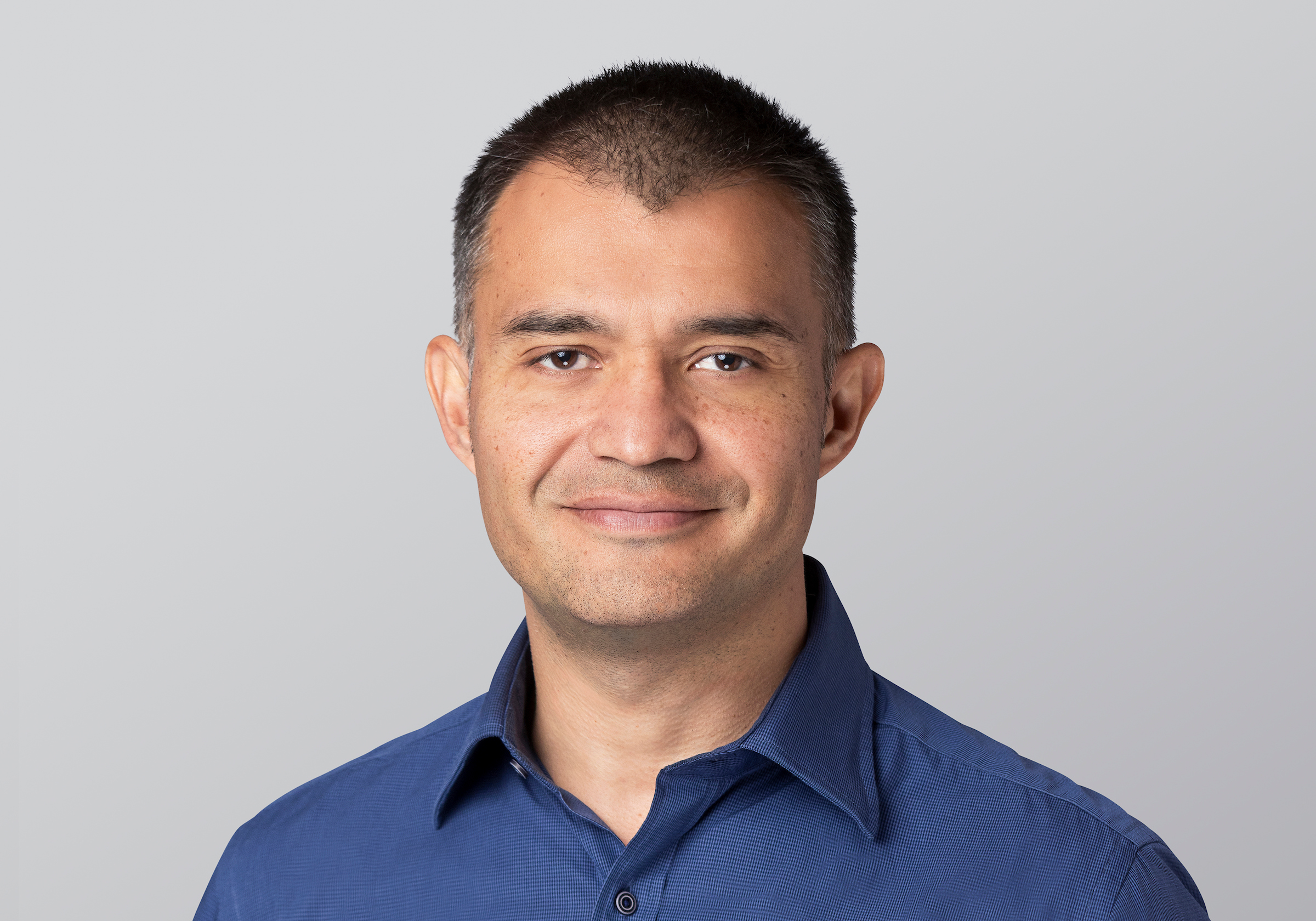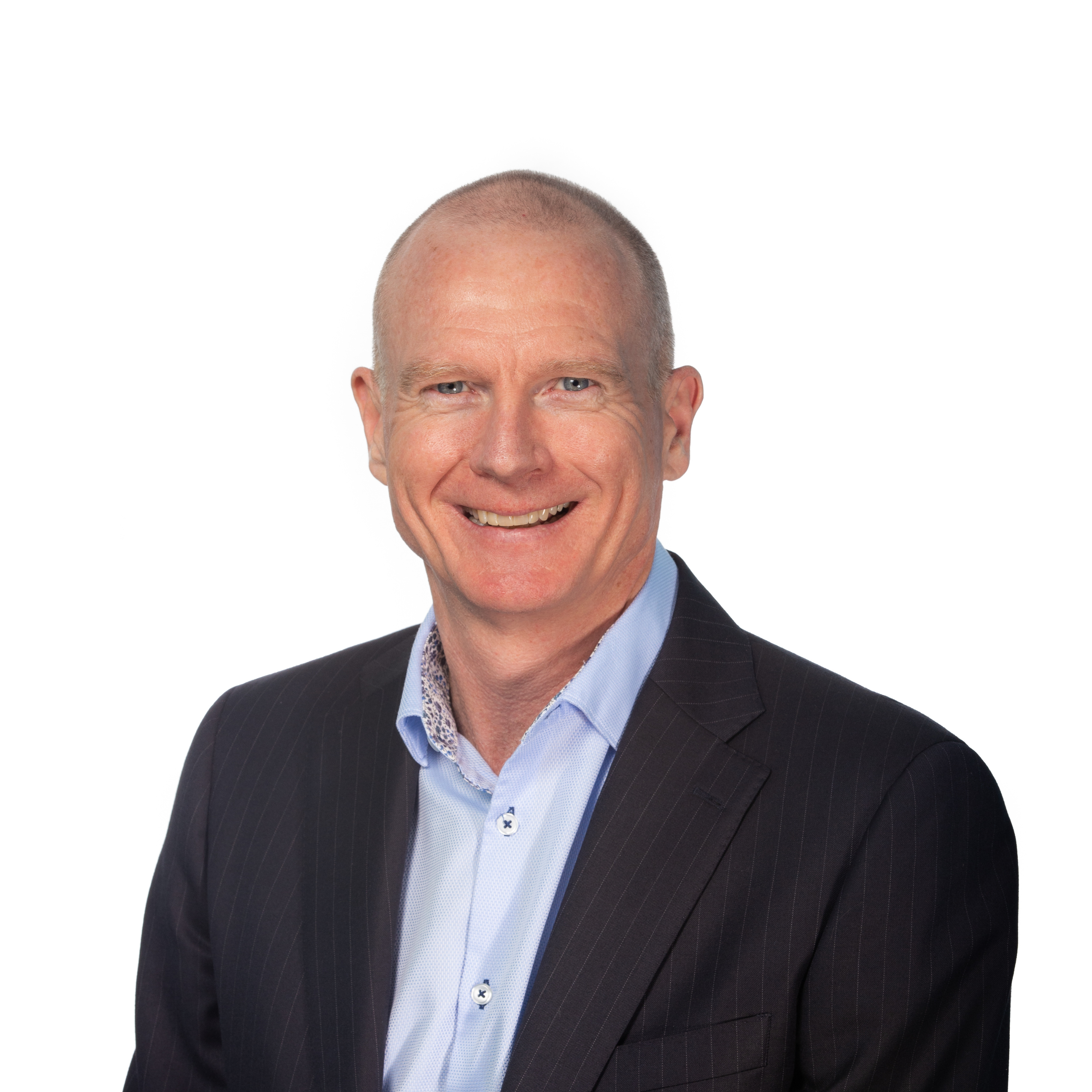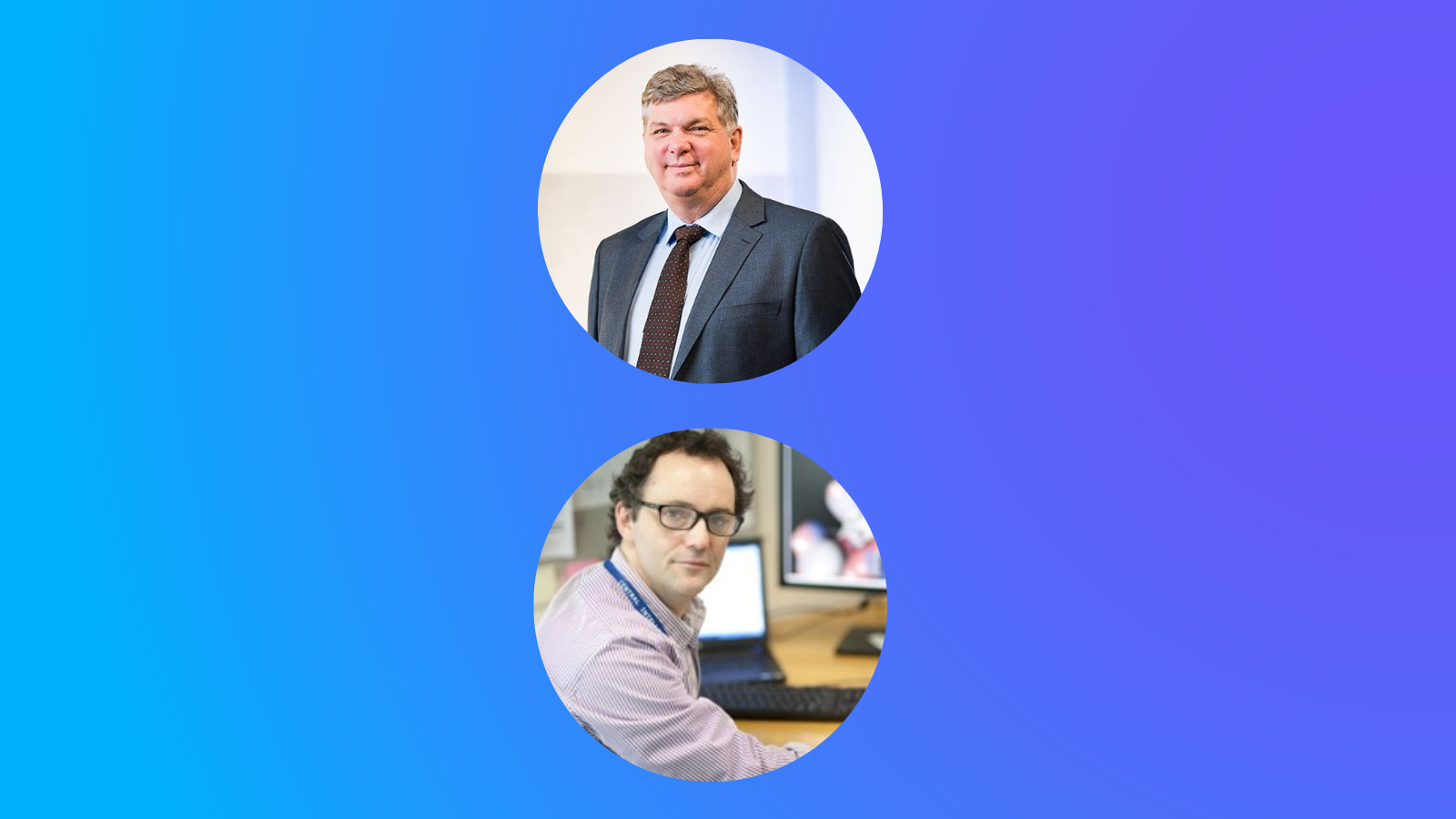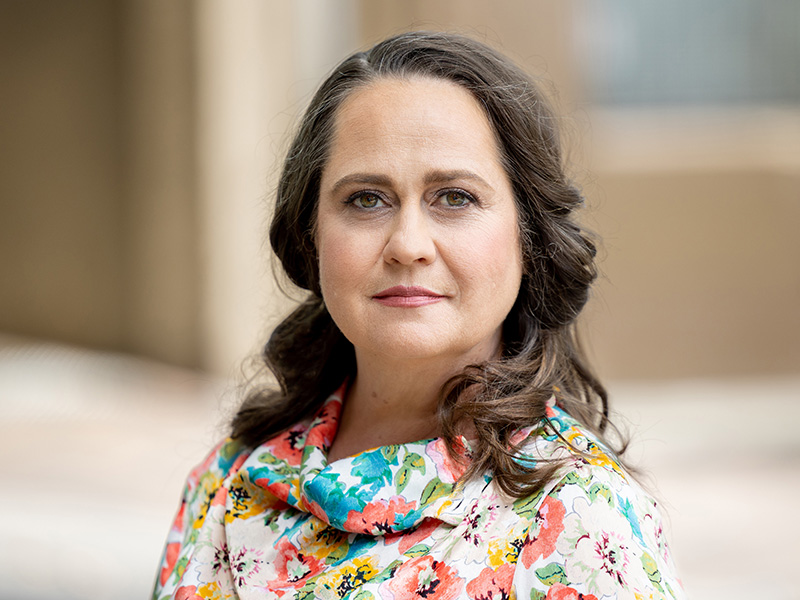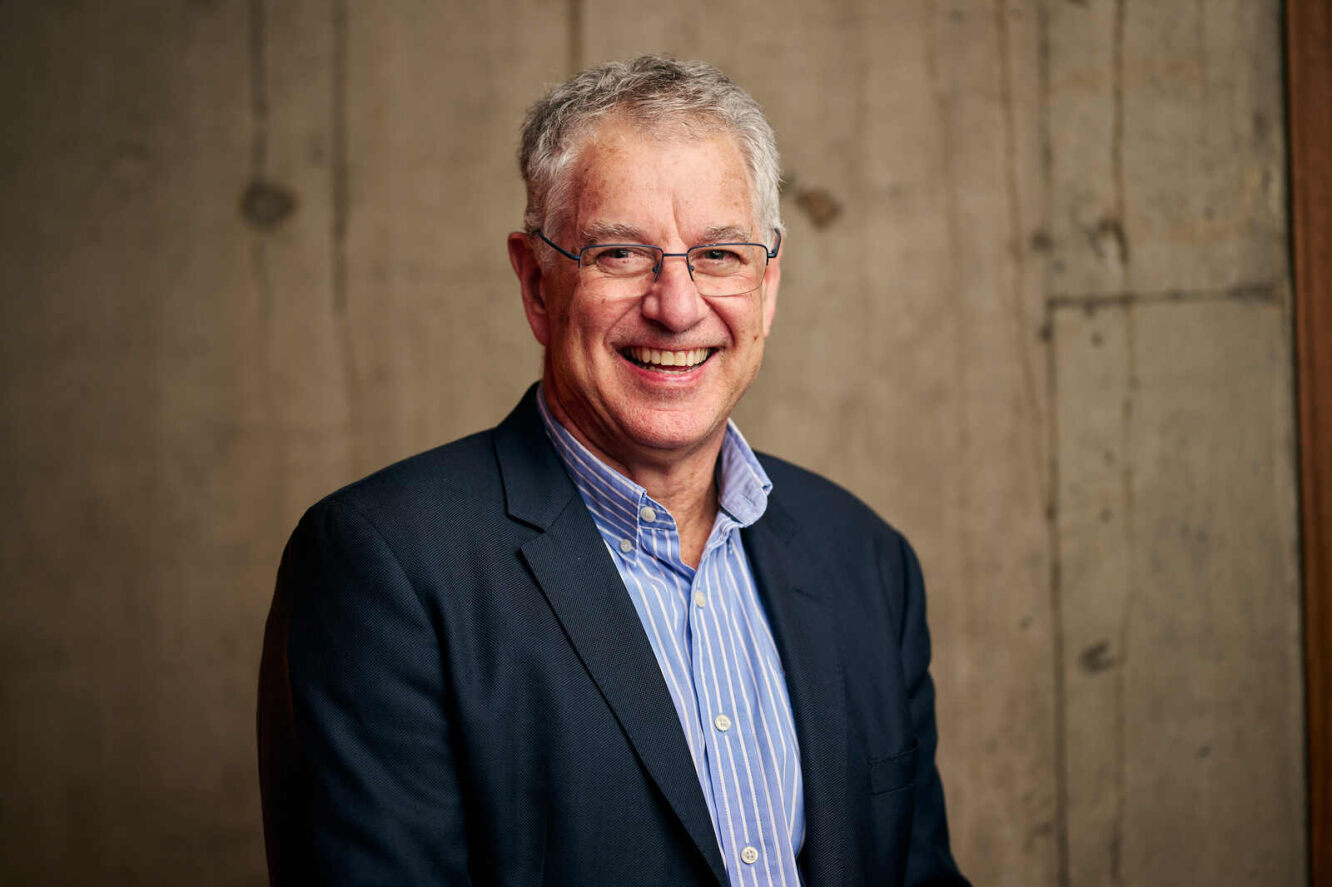Med Tech Talks
Perspiration and commercialisation with A/Prof Tom Oxley
This series is dedicated to understanding what drives successful and impactful innovation in medical technology, and you would be hard-pressed to find someone as fitting for us to have as a guest on this podcast than Associate Professor Tom Oxley, who kindly joined us from New York.
As well as being a renowned interventional neurologist at Mount Sinai Hospital in New York, Tom is the founder and CEO of Synchron, a company that specialises in neural interface technology. Synchron was born from Tom’s great innovation, the Stentrode, an implantable medical device that can translate brain thought signals from the inside of a blood vessel.
Thoughts captured from users of the stentrode are translated wirelessly digital devices designed to stimulate thought-controlled movement, which could transform the lives of people who are paralysed or have severely restricted movement.
In this episode you will hear about:
More information:
Take a look at the Synchron website: Synchron
Associate Professor Tom Oxley [00:02:07] Thank you, Robert.
Robert Klupacs, CEO Bionics Institute [00:02:08] Tom, it’s wonderful to talk to you today. But before jumping into everything you’ve done and some of the amazing innovations you’ve created, for our listeners, can you just give a very quick thumbnail sketch of how a medical graduate from Melbourne finishes up as an interventional neurologist at Mount Sinai Hospital in New York?
Associate Professor Tom Oxley [00:02:26] Well, I think interventional neurology was a pretty small subspecialty area when I was thinking about or getting interested in around 2008, 2009 and it wasn’t until the advent of stroke with the five New England Journal papers that came out in 2015 showing the efficacy of the thrombectomy when it kind of became real. But I had a interest in it, and I had, at the start of my neurology training, reached out overseas and I’d taken a couple of trips and I’d just chase a fellowship. I actually interviewed for the job for a fellowship in New York in 2010, for a 2015 job. and then I got the job offer in 2011. So I had four years of other stuff to do, which was finishing my neurology training and doing a Ph.D. before I actually started a job. So I think I think I just early on got pretty excited about where the field was going with intervention in neurology. Given where things have gone in cardiology a couple of decades before, it seemed like it was going to be inevitable.
Robert Klupacs, CEO Bionics Institute [00:03:37] And we’re going to talk a bit more about how you finished up, where you are and what you’ve done on that journey. But I have a few questions for you, Tom, and really interested in how you react to them, so we recently in your TED talk that you gave about the future of communication, you talked about unlocking the brain and how it’s a black box. Can you tell our listeners what your technology platform is and what Stentrode is and the impact it can have on restoring people’s dignity by reconnecting people to their loved ones?
Associate Professor Tom Oxley [00:04:06] And the black box concept with the brain is that there is a huge amount of information flow that’s quite predictable happening in known regions around the brain and technology to this point, EEG. on the scalp or other technologies, has given a little bit of a window into those, and EEG patterns can be useful in epilepsy and other conditions, but getting real time information that relates to your second to second brain processes hadn’t yet been revealed. And so the first human implant of a brain computer interface using the Utah Array from Brown University was published in Nature in 2006. I first read that article when I was on nights at the Alfred Hospital doing my second year resident, and I was struck by the likely huge impact that we were going to see over our lifetime of brain computer interfaces. And then at the same time, I was getting interested in blood vessels and I’d had some exposure to electrophysiology of the motor cortical system from a TMF hounours project that I did through medical school and so all those things combined was a concept of delivering electrodes or sensors into the brain without having to perform open brain surgery, which is what the Utah array had been required to do.
Robert Klupacs, CEO Bionics Institute [00:05:37] I followed your journey a fair bit, as you know, and for our listeners, I know that you make it sound pretty easy. You had a lightbulb moment about what you like to do and then obviously you’ve gone on and done it. We’ll come back to that. But I’m also aware that the idea of putting something into the brain the way you did was quite controversial, and there was a lot of naysayers. Can you just take us through some of the stories, some of the feedback you had from some of your respected colleagues?
Associate Professor Tom Oxley [00:06:05] Well, first of all, I think the concept that interventional neurology was going to be a legitimate subspecialty field, that there were naysayers, I had mentor telling me not to take that risk, that that was a very small area just for the treatment of cerebral aneurysms that was never going to grow. So that was that was one thing that just inherently felt not it just couldn’t be true given what had happened with interventional cardiology and the movement of medicine towards minimally invasive approaches. That was one thing. And then I think the second thing around, particularly around BCI, was that you couldn’t possibly leave a device inside the blood vessel that was a permanently implanted, active electronic implantable. And Rahul Sharma, who was one of my co-founders, along with Nick Opie, Rahul Sharma was also a Monash Medical School graduate who ended up he’s now the head of interventional cardiology at Stanford. He and I used to spend hours as during our internship actually in Mildura we spent hours talking about where the field would likely go and I was hearing from Rahul about what had happened to interventional cardiology and I started reading about it, it was really interesting to see all the literature around the late I think it was maybe early eighties into the early nineties, around the push back in the cardiology domain about how you couldn’t possibly leave a electrode that stimulated or recorded the heart from inside a vein inside the heart that the pacemaker, because that would surely lead to occlusion of these veins and all sorts of circulatory problems. And in fact, it did a lot of the early pacemakers, there was 20 to 30% rates of thrombosis, but it happened gradually and it didn’t lead to major problems, particularly in the venous system, because the drainage could reestablish itself. And there were similar things that I was hearing early about the risks and you know, to be fair, like risks of thrombosis inside the venous system in the brain are a serious but, so, you know, a long time has gone since then, but we’ve you know, and the FDA has had similar concerns that we’ve been able to deal with all the safety issues and I think we’ll look back just like with cardiac pacemakers and what they are moving electronics inside a blood vessel in the brain actually makes sense.
Robert Klupacs, CEO Bionics Institute [00:08:29] So you obviously had that thought and all that thinking you’ve been doing and then that journey, you’re actually creating the device that actually was successful. Can you just take our listeners through what that was and the ups and downs and the rights and wrongs, and then how you finally got that into a patient?
Associate Professor Tom Oxley [00:08:46] Well, I think if I look back on the moments that were really critical, the critical moments. One of the early ones. And I think as a general bit of advice that I would give to people who have got a good idea or a dream or a concept or something that they might be passionate about and not sure whether to do it, I took a year off after I passed my physician exams, before I started neurology. I took a year off and I went traveling. And I was thinking over that year about what I wanted to do for an academic career, for research, what research questions I wanted to answer. I wasn’t thinking at that point that it would necessarily be a commercial endeavor. I was wanting to pursue the curiosity of the brain, and it was cold calling. It was reaching out to people where you don’t know them or they don’t know you and you don’t know what will happen and just throwing your enthusiasm and passion out into the world where you have no idea what’s going to come back and I think I shot out 200 cold call emails that year, and one of them that came back was Jeffrey Ling, who was the military neurologist in DARPA who happened to go. I had found him because I’d been reading about him, but he was in a very large, well-funded defense program in the US group called DARPA, and he got back to me straight away from a cold call email. He invited me over. I went to him. I just pitched this basic concept of using blood vessels rather than doing open brain surgery and he then that triggered a then I had to keep him. Anyway, there’s a long story, but he put me on to someone else that I had to go and figure out if there was a pathway forward. I put together hypothesis came back despite neurology training. I got introduced to Nick Opie, who was the engineer who actually was able to build the device. And then we wrote a grant and we got the first million and then things sort of went from there. But I also look back, I would say, you have to throw yourself out into the world where you have no idea if anything is going to come back.
Robert Klupacs, CEO Bionics Institute [00:10:49] Well, fantastic story. That DARPA, it resonates with a lot of people in Australia. But that idea of a cold call leading to something and just following it to finish up where you have been is fantastic.
Associate Professor Tom Oxley [00:11:00] And just on that, I mean, there are also 190 that I didn’t hear back from. You know, there was a lot of people that I was really making a huge effort to see what would happen. It was like going fishing and there were a lot of fishing lines out there, but there was a lot of periods in time where you think, Well, why am I doing this? This is silly, but it just takes one little spark that can then kick off a whole pathway. So you’ve got to you’ve got to throw yourself out.
Robert Klupacs, CEO Bionics Institute [00:11:26] You know, when you when you hear all the other podcasts, when they come together, Tom, we will see that everyone says exactly the same thing. Inspirations. Fantastic. The perspiration is probably the major thing that they will also tell us your story resonate with that.
Associate Professor Tom Oxley [00:11:42] You know and that’s continued that’s just to make the point Robert that’s continued along the way because if I, you know, then over the over the course of the ten years shifting from academic group to then trying to raise capital to convert into company, I would also say like for instance, the series B financing that was closed down about 14 months ago now, we were almost running out of money and spending a lot of money and I think I counted 200 pitches to investors. By the way, I could not raise money in Australia for the series A, it was too out there. Everyone was saying this is way too long, it’s going to take too long. Does it work or too much risk? Got through the series A, but then the series B was even harder again, and it was to walk in and hear from the very, very smart people that what you’re doing is not going to work and still bounce back and keep going. You’ve got to have some degree of fortitude or belief that’s got to come from somewhere because it’s pretty hard, you know, really respectful, amazing people to give you really good reasons why it’s not going to work and then figuring out a way to make it work.
Robert Klupacs, CEO Bionics Institute [00:12:50] Well, I mean, I didn’t I didn’t I knew some of that journey Tom. I didn’t realize it was that hard. But as you say, your self-belief has proved people wrong. So but just on that point, so when did you and your colleagues realized that, you know what you’ve done? The Stentrode might actually be something really amazing, that it could allow patients with paralysis or amputations or other serious neurological disease to potentially communicate again, to undertake activities or get their life back. When did you realize that you know what you were dreaming about could actually becoming reality? I know there’s still a long way to go, but when did you start really believing?
Associate Professor Tom Oxley [00:13:27] I don’t know, there’s still a long way to go and I think the moment where you think that its now going to take care of itself and it might fall apart. So as of today, right now, I still feel like we are in a moment of complacency could really hurt everything that’s going on. So, you know, we’ve gotten the technology to a point. We’ve shown some impact with our patients, but it’s got to get a lot better than what it is now and there are still lot of issues that we need to to work through. But I mean, I think the first I think the moment and I talked about a little bit in the TED Talk at that moment when the you know, we’d spent, Nick and I had spent years in the animal model just trying to make the device deliverable through a catheter. And then we had some degree of signal coming from the brains of the of the of the animal or the sheep that we’re doing the animal model of. But until we were actually into a human stage, we didn’t actually know if we were going to get good enough quality data that could be useful in a way that actually reflected second to second intention of the patient, because that’s what the system does. It detects, are you trying to move some part of your body, you know, second to second? And if you are, then it’s going to activate a switch which controls something. So there was the moment with the surgery for the first patient that went well. It was fine. He woke up. He went home. But then the moment when we first had the system up and running, the brain data was flowing and we were able to see the level of signal fidelity that we needed to reflect the recording of of a motor intention or motor will, that was that was a pretty amazing moment.
Robert Klupacs, CEO Bionics Institute [00:15:06] Well, I mean, for our listeners, I know that you just announced you’ve started clinical trials, and I think the Stentrodeis in six paralyzed patients now, is that correct?
Associate Professor Tom Oxley [00:15:17] The Stentrode is in 4 patients right now and we’ve got approval for another 16 happening in five sites Melbourne, Sydney, Brisbane, New York and Pittsburgh.
Robert Klupacs, CEO Bionics Institute [00:15:27] And what’s the pathway to to go from 4 to 20 to hopefully then have the product approved and be available to a much larger group of people.
Associate Professor Tom Oxley [00:15:36] We started discussion with FDA in 2016 around a first in human study in the US, and we only got approval from the FDA to launch that study in 2021. In the meantime, though, we got approval for a small number of patients in Australia and Australia has been an incredible place to do first in human work. And so we’ve, we’re still focused on continuing the studies in Australia because the FDA love the Australian data. It’s very high quality and it’s supportive of the ongoing submissions. But are the pathway to getting the first human study approved in Australia required a very high standard of manufacturing quality testing animal data that enable us to get going.
Robert Klupacs, CEO Bionics Institute [00:16:34] It’s amazing. And I mean, as I said, we’ve been following here from the institute, your journey for the last ten or so years. And as you mentioned before, you had a series A raising, a Series B raising, which I understand is the last ones over that $50 million Australian. But for our listeners, can you tell us how difficult it was? You mentioned some of it before to raise that early money and then to put in perspective for every other innovator in this country who wants to follow your journey, how much more money you think you’re going to need to spend to get Stentrode, approved and on the market?
Associate Professor Tom Oxley [00:17:07] Yeah. So I think the yardstick for a fully implantable class three medical device from start to FDA approval is typically considered to be about 150 million we use we have raised 70 million to this point and we are approaching, hopefully, the approval from the FDA of the pivotal trial within the next short, short while. And then we have to conduct a pivotal study. So the FDA typically requires a number of for a pivotal study of a medical device, a minimum of 150 patients. But there might be there might be a lower number than that for this particular type of technology. That remains to be seen. So that would be on a PMA pathway. If you go for a humanitarian device exemption pathway, it’s more like 20 to 30 patients. But that pathway has is is not a pathway towards reimbursement. So it doesn’t necessarily support a strong business model. So it’s a little lower number of patients.
Robert Klupacs, CEO Bionics Institute [00:18:13] You know, I think some people here have seen the issues with with HDE when it came to the bionic eye. And I think your pathway, although much more expensive and much more difficult, is we would also I would agree with you, is the right way to go.
Associate Professor Tom Oxley [00:18:26] Well, second sight did the same thing. Second sight went down the humanitarian pathway as well and that led to reimbursement challenges.
Robert Klupacs, CEO Bionics Institute [00:18:34] Correct. So you’ve raised $70 million and I mean other $80 million to go. So sounds easy. What’s the plan as, a Series C in the United States or an IPO in the United States?
Associate Professor Tom Oxley [00:18:46] Yeah, I’m trying to raise a series C currently, but we don’t need to immediately, but it wouldn’t be 80 million if we just wanted to bring one product to market. Synchron has an opportunity that goes beyond that. I mean, again, looking back to what happened to cardiology in the nineties, the the shift from mechanical stents, balloons, catheters to the electronic domain led not just to the pacemaker. It led to cardiac defibrillator and mapping and defibrillation and ablation and a lot of other technologies and I think we sit at the precipice of delivering on, you know, several lines of products that arise from solving the electronics into the blood vessel problem for both sensing and stimulating inside the brain. So we have to be focused. We have to get one product approved and go from there. But you know, Nick Opie, we’ve kept the team in Australia are working on next generation products and we’re pretty excited about the potential. So but it is step by step and we have to be focused on the first products. So we’ve broken up the team in Brooklyn, in New York to be focused on the first-approval, the kind of R&D clinical team, and then Nick’s team in Melbourne on next generation technologies, the new products.
Robert Klupacs, CEO Bionics Institute [00:20:11] Well, I mean I think everyone here is is willing you to be so successful and as you say, you’re going to change the way the world lives for the next 50 years we hope. One thing which is one of to change tack a little bit, Tom, in this series, one of the things we’re trying to tease out is the role of mentors for innovators. You’ve made a couple of comments already about people who mentor and people who came along the way. But just for our listeners, who is some of the people that lead you on the path you’re on today?
Associate Professor Tom Oxley [00:20:38] So I’ve noticed that some people gravitate towards mentorship and some do not. And I’ve kind of I’ve been trying to coach this within my team, and I can’t, you can’t train someone to chase mentors, but I think it just happens in your personality. But I can’t stress enough how important it is to go and have a group of people that you can go to with your problems to help you give a new perspective because you don’t have all the perspectives. And even if there is no one doing what you’ve done before, you’re facing a completely new problem. You have to you have to look for new perspectives and look for support and mentors. I’m always surprised. And some people say, well, you know, why would they want to talk to me or why would they want to help me? And just last week, I heard the CEO of Next Door say the same thing and her career kicked off because she had just done a cold call to someone asking if they would mentor her and make people do it. People want to do it. So for me, there are two critical I’ve got I’ve had I’ve reached out to a lot of people along the way, and there are two stories that spring to mind. The first was What does it look like to spend 7 to 10 years through my medical training and then transition into running the company? What would that actually look like? And Arani Bose, who is the founder of a company called Penumbra that revolutionized catheter based therapy for stroke. He was in New York, and I found him early on, like in 2010 before I’d moved here and I just reached out. I actually spent about six months tracking him down, eventually got him, and he’d done a similar course in medicine. He’d done neurology to radiology, to the Ph.D., 20 years of training. And then he started this company and left medicine. So and he gave me his story. I have almost mirrored and I won’t go into the details, but it was not obvious how that transition would happen and the way that he gave me view on that gave me confidence that there was a way this could work. That’s why. And then the second one was local when I was at the University of Melbourne working on the early versions of the device in the animal stage. So I had to negotiate the license for the company out of the University of Melbourne with the Tech Transfer Office, and that was really hard, that was really, really stressful. And I remember I called up John Parker, who was the ex-CTO of Cochlear, who then started his own company called Saluda, which has been a highly successful medical device company building a spinal cord stimulator. And I got in connection with him and I had 30 minutes at a time just for our first call. And I said, John, I’m stuck. I don’t know. I don’t know how to negotiate. I don’t know what to say. Like, we’re stuck. They have, what I’m being told, unreasonable expectations about how the license should look and I don’t know what to do. And he gave me a really simple bit of advice, which was you have to figure out what your walk away is. You have to you can’t negotiate unless you actually getting ready to walk away. And then you’ll see where they where their bottom really is. And it was really simple, but it really bit of profound. So I had to go and figure that out and I did. So it was just an example of reaching out to someone. You don’t know who they are. You think they probably wouldn’t help you. They turn out to even a short amount of time, give you a perspective that can change the way you think. And you know, you’re not going to find someone who’s done exactly what you’re doing, but as long as they have done something similar and walked a path, that just might be a bit of advice coming for you that in retrospect will seem obvious, but prospectively, even you didn’t know how to get there.
Robert Klupacs, CEO Bionics Institute [00:24:20] Oh, fantastic, Tom. I think I’m going to bottle that that quote and put it through the teaching courses of all the universities in the country, to be honest, because I’ve never heard anyone present it quite like you have and quite as eloquently as you have, because I think you’ve lived through it. I’ve lived through it. Sometimes it’s just hard to know. And the only people who’ve been there in the trenches before is amazing. Just that they can help you out. And you. And John, the other bit advice he once gave me was never take a knife to a gunfight, which is something I’ve lived with. He said, you got very lucky getting John because he’s a pretty tough but a very, very good man. Just switching switching things a little bit. We’ve got you now. Not not much longer. I know you’re busy, but few questions that everyone wants to know from people like yourself. How do you define innovation? Because, you know, it’s a buzz word here and particularly in this country now in Australia that we have to innovate more, but people sometimes think that’s a huge thing. From what you’ve what you’ve lived through, how do you define innovation?
Associate Professor Tom Oxley [00:25:24] Innovation is creating something new in a way which is needed and meaningful. But it’s creating something new, that is really what innovation is about. It’s really that new found a different angle. There’s a new pathway, and once it lands, it’s going to change the dynamics of what we existed to be the norm. It’s going to change the way we think. It’s going to change the way we behave. And you created that. You actually created that yourself.
Robert Klupacs, CEO Bionics Institute [00:25:55] Yeah, it’s interesting. I mean, you know, we’re both Australians. You’re now living in the United States. What do you think the difference is between Australia and the United States, both in terms of innovation that we just spoke about before and then turning innovation into something that’s going to have an effect?
Associate Professor Tom Oxley [00:26:13] Well, first of all, I think the smarts are in Australia, we punch way out of our league given our size and, you know, our resources. So huge potential for Australia. Without the resources that the US have, it’s harder to materialize a lot of these things, I couldn’t raise capital in Australia. The appetite for risk wasn’t there. The investors who led my Series A and Series B, they had a bigger appetite for risk than anybody that I’ve seen in Australia. And so that’s that’s an issue. But now Israel has done that. Israel has found a way to bring investors into locally funded companies where there’s a risk appetite. So I think there’s a way to do it, and I think we’ve done it yet. I’m not convinced that using the government fund to fund the seed as a sustainable growth model because, you know, it’s kind of defeats the purpose of doing it in the free market. And so, you know, I think it’s great, but I’m a little bit concerned about that model and then it also takes an industry that kind of comes together and there are elements of the industry happening in Australia with the R&D tax rebates working really well. I think the first Inhumans stuff is fantastic. The quality of the clinical care is outstanding, that excellent science. But the other peripheral pieces, the manufacturing, the, you know, the pre-clinical kind of ancillary staff and then the fund and then the actual funding and the dollars and then the alumni, I think, are the pieces that need to come together. But it’s happening, I think, in the tech side, companies like Canva and Atlassian and you know that, you know, Afterpay, there are innovations happening that are staying local that are having huge success. So I think it’s a great future for Australia. But for the medical device side, I think that the ecosystem in the US around Minneapolis and San Diego and other Californian region, Boston, have taken a long time to come together. So I what I would love to say is, is founders coming back to Australia, finding ways to raise capital and bases and supporting locally bred groups. And for me, Israel is the model.
Robert Klupacs, CEO Bionics Institute [00:28:35] Yeah, that’s really, really insightful. Just link back to that question about, you know, where Australia can play and linking that to the world scale. What do you think the biggest threat is and the biggest opportunities in med tech development? And as a follow on from that, where do you think Australia can play in both areas?
Associate Professor Tom Oxley [00:28:56] I’ve heard examples over the last ten years of discoveries that were not translated in Australia. I think we are untapped with regard to our science and and research, primarily research, patent landscape development. I think there’s more happening in our institutes than can and has been commercialized. So I think that’s where the opportunity is. I think I think the challenge is probably speaking personally, but the challenge in Australia is around capital. And I think the other thing, I think the world is getting smaller now, but the timezone differences has been a challenge to work on with Australia, but the VC’s very happy to invest back in Australia. So the challenge is how do you put the entrepreneurs in front of the money? And I think that’s something that David Grayden’s Biodesign program at the University of Melbourne. I’ve already seen incredible companies coming out of that program that’s fun and we’ve set up a BioDesign program here in Mount Sinai thats really mirrored up the Stanford Biodesign program, which is, I think, what David Grayden was able to do at University of Melbourne. But my view on why that’s worked is because David and I might be missing people who are living there, but in my head it’s David who’s really put it together, that David got together with and got buy in from a business faculty member. And that’s the key is like you then if you get buy in from business and you get buy in from engineering and you can get medicine, then there’ll be some courses that are done, some exposure to the students, and then you have mixing events and they all sit together and they come up with an idea. Then you just have to put money man in front of those people and then the interest and then the whole culture starts to emerge. So I think I think that’s I think that model works really well under the model of business, medicine, engineering.
Robert Klupacs, CEO Bionics Institute [00:30:53] You know, it’s fantastic because David is my next speaker on this in this series. So we’re going to tease him out to what he’s done and the number of companies that have been spawned from that little group is quite extraordinary. So I know.
Associate Professor Tom Oxley [00:31:05] And they’re good company, really good companies, really good technology getting funded.
Robert Klupacs, CEO Bionics Institute [00:31:09] Yeah. I mean, David is just one of the great men of Australia which are not I don’t think a lot of people realize and hopefully we can raise that in our series because he talks about he’ll talk about you clearly, but the fact that you talk about him is just wonderful to hear. We’re running a bit out of time. I know you’re a busy man, so while we’ve got you and I know there’s a lot of people will be listening to this to this because I want to hear your story, but for upcoming researchers or, you know, young people now who want to break into this field, what advice can you give from your story and from what you’ve seen others do? The good and the bad.
Associate Professor Tom Oxley [00:31:44] If you’re researching something and you think that you’ve seen an outcome of the research that you think is could change the way that things are done and you don’t quite know what to do with it or whether it’s real. I would just strongly encourage you to, you have to go out and talk about it. You have to put yourself out there. I think people tend to be afraid or they’re paranoid or they think that I’ve got this idea, but I’m not going to tell anyone because then, you know, someone might steal it. That that’s that that is not I’ve not seen anyone be successful starting out with that attitude. You have to put yourself out there. You have to you have to reach out to people and see if you’ve got something. You have to find out why. You have to go and understand what are the reasons that might stop you from being successful with taking that idea forward and once you’ve done that, you have a roadmap for what you need to overcome. That’s literally what happened, and you have to be resilient. So when I first approached University of Melbourne and I said, I want to spin out, I want to spin out a company, I still do my PhD and we had the basis of an idea and they said, You can’t do that. You don’t know how to run a company, you’ve never run it, you’ve never started a company. You don’t know how to start a company. You don’t have any money, you don’t have enough patents. And I was running down everything they were saying. Tell me more. What can I do it? What can I do it? One, two, three, four, five, six, seven. I had a list of things I had to go and do. And so until you put yourself out there, how are you going to figure that out? You have to go and you have to go and absorb and take from people the reasons why it might not work and then go and solve those problems. So my advice would be to just. You have to. I hate to use the term manifest yourself into the universe, but you really have to you really have to throw yourself out there and be, you know, be open and willing to embrace criticism and even ridicule.
Robert Klupacs, CEO Bionics Institute [00:33:40] I don’t think anyone’s ridiculing you now, Tom. So that advice is gold and I think anyone listening to this podcast and a young person listening this podcast does take that to heart. Thank you so much, Tom. So we’ve taken up quite a bit of your time, so we’re not going to take up any more. So and thank you and really thank you for imparting some of your knowledge and experience to our listeners today and for giving some time in your busy schedule to join me on the Med Tech talks. We’re all passionate about it. Yeah, we’re all so passionately excited to see the next steps to Synchron, to follow that journey and not just because of success economically, which we hope will happen for you and your colleagues and everyone else. But the impact you’re going to have on human health and people with that basically have had nothing up to date until you’ve come along. To our listeners, I hope you enjoy listening to Tom and I look forward to introducing to our other guests in the future podcasts. There are links to everything we’ve talked about in the show notes and we look forward to welcoming you next time. This podcast is one in a series being released in the lead up to our Innovation Lecture taking place in Melbourne, in September, on September the eighth. Please go to WWW.Bionics Institute.org to find out how you can register this free event and hear about building Australia from innovation. From CSL’s Chief Scientific Officer, Dr. Andrew Nash.


